We Continue Our Walk (Page Two)

A Buddest building was added to the Japanese Garden donated by locals

New waterfalls behind gthe original buildings

Greg catches a good shot

Neat display
Did You Know? - The words "viewing stone" and "suiseki" are often used interchangeably in the Western world. However, they are not the same. The Japanese Art of Suiseki is much more refined and defined. In the study, collection, and appreciation of stones as art, we must understand that there is a clear distinction between the cultural forms of stone appreciation.
Japanese Suiseki criteria formed the basis for defining the characteristics of our Western stones. Likewise, Suiseki classification is also the international criteria for stone recognition and naming used throughout the world.
One of the key aspects of this art form is the suggestability of the stones. True suiseki should "suggest" something to the viewer, yet not be a precise miniature representation of the object. This suggestibility may come from a memory, a feeling, or recognition of a special place or mountain. It could be a waterfall, a house, an animal, or a person. Sometimes the special stone has a shape that represents nothing in particular, but the texture of the stone or its patina evokes special feelings, emotions, or recognitions.

Greg sees something in it
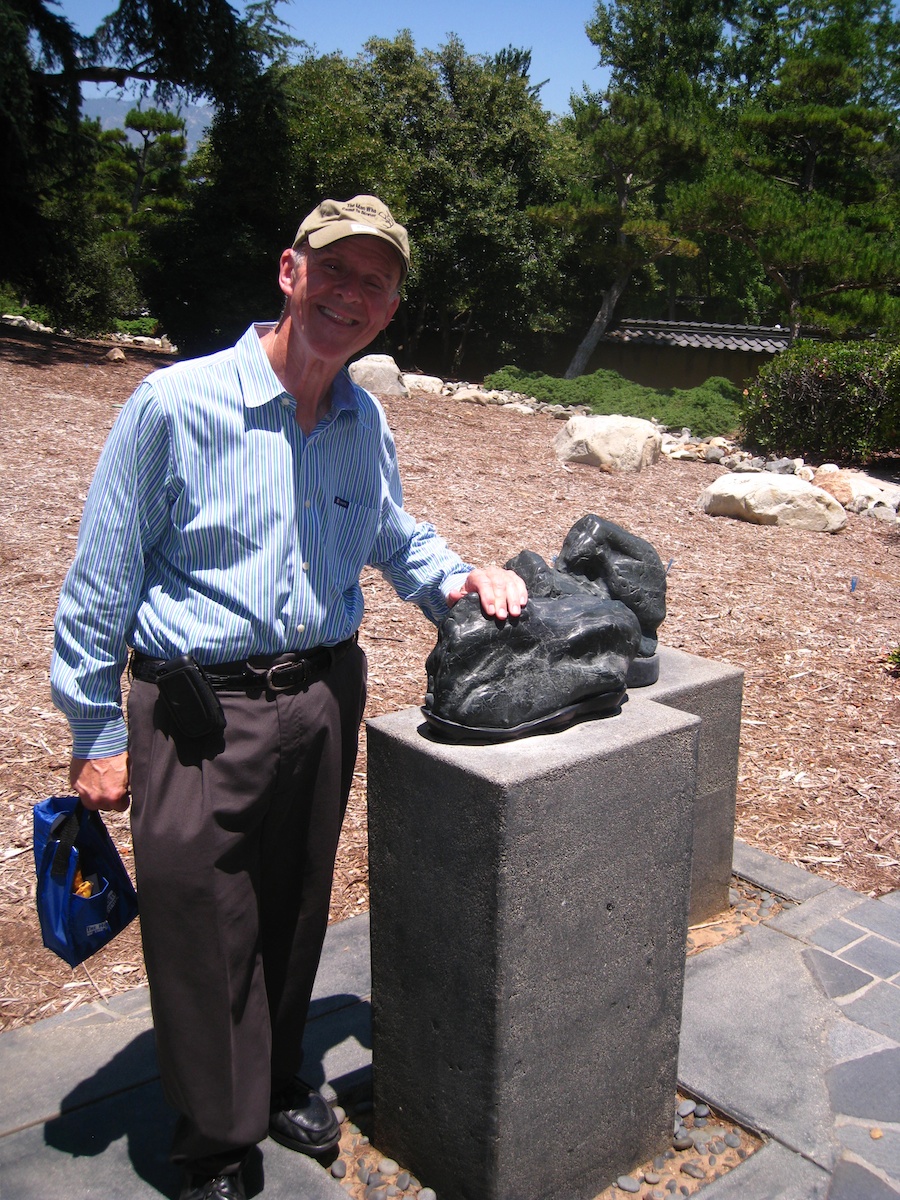
Yes... You are supposed to touch it

Small maple trees will become bonsai

An azalea
Did You Know? - Satsuki Azaleas are popular bonsai plants for many reasons. It can take a hard pruning, the flowers are amazing, and they can be developed fast. Since azaleas prefer to be slightly acidic, a popular soil to grow them in is kanuma.
Satsuki azaleas have a diversity of flower forms and color patterns with multiple patterns often appearing on a single plant. Satsuki bloom from May to June; the name “
Satsuki
” in Japanese is reference to their blooming period, the fifth month of the Asian
lunar calendar
.

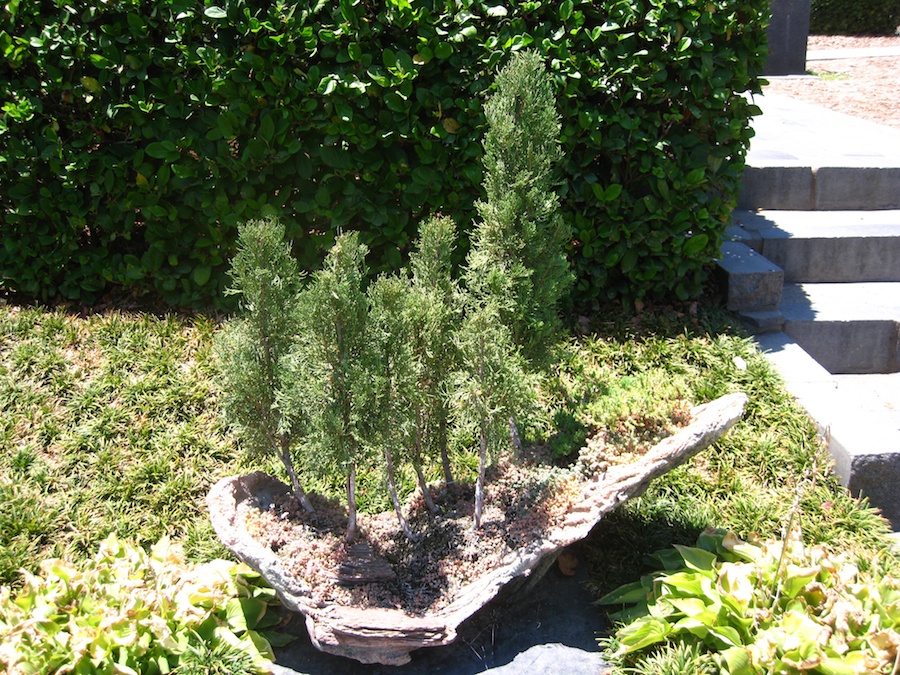
Amazing patience to create such beauty

Sometimes they paint on the bark to bring out the textures

Right out in the open
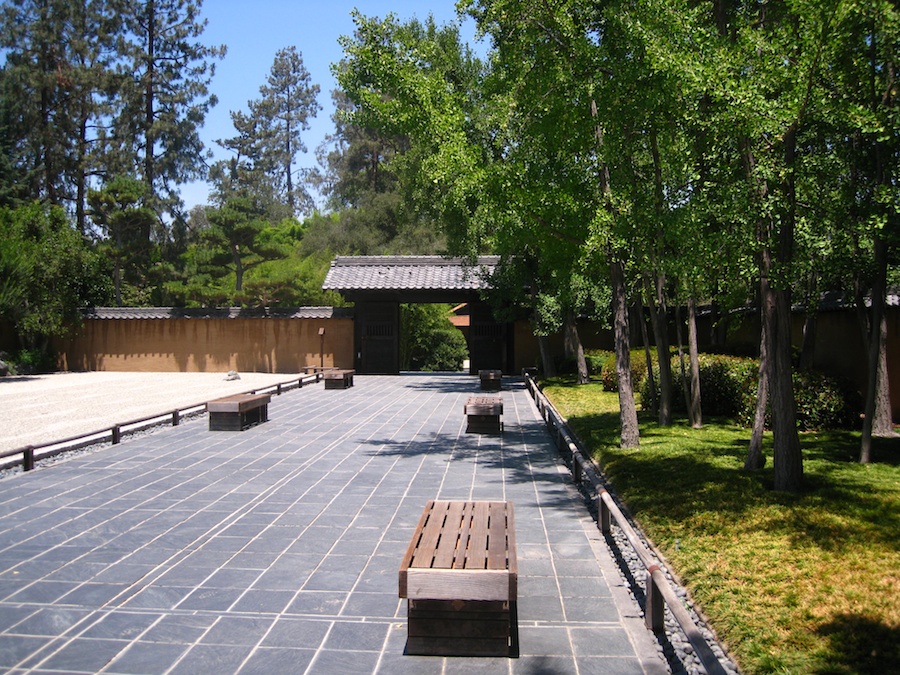
Zen Buddist walk through
Did You Know? - The Japanese rock garden (??? karesansui?) or "dry landscape" garden, often called a zen garden, creates a miniature stylized landscape through carefully composed arrangements of rocks, water features, moss, pruned trees and bushes, and uses gravel or sand that is raked to represent ripples in water.
A zen garden is usually relatively small, surrounded by a wall, and is usually meant to be seen while seated from a single viewpoint outside the garden, such as the porch of the hojo, the residence of the chief monk of the temple or monastery.

Capturing the beauty
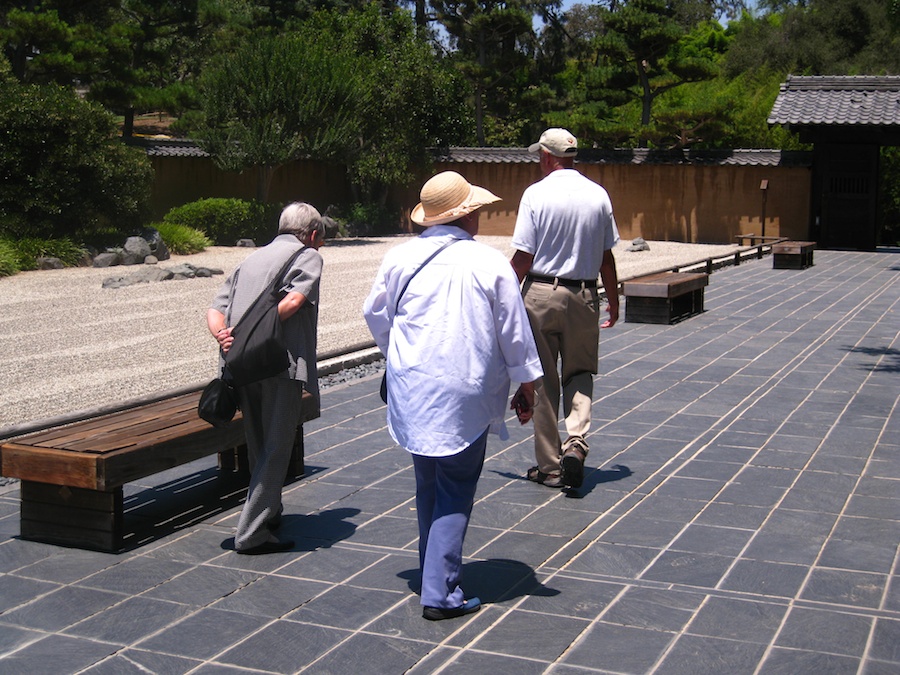
The docent leads the way

No steps for us... We take the pathway around the steps

Great garden.... Mostly green

Very creative
Did You Know? - Rock gardens existed in Japan at least since the Heian Period (784-1185). These early gardens were described in the first manual of Japanese gardens, Sakuteiki, or Records of Garden Keeping, written at the end of the 11th century by Tachibana no Toshitsuna (1028?1094). They were largely copied from the Chinese gardens of the Song Dynasty (960-1279), where groups of rocks symbolized Mount Penglai, the legendary mountain-island home of the Eight Immortals in Chinese mythology, known in Japanese as Horai.
The Sakuteiki described exactly how rocks should be placed. In one passage, he wrote: "In a place where there is neither a lake or a stream, one can put in place what is called a kare-sansui, or dry landscape..." This kind of garden featured either rocks placed upright like mountains, or laid out in a miniature landscape of hills and ravines, with few plants.
He described several other styles of rock garden, which usually included a stream or pond, including the great river style, the mountain river style, and the marsh style. The ocean style featured rocks that appeared to have been eroded by waves, surrounded by a bank of white sand, like a beach.

View from the path

See the waterfall coming down the rocks... Very subtle

Ed was quite knowledgible

Sue explains how gravity works....

Pondering the moment

"Click"

Miss Hollywood in disguise

The house was refurbished....
Did You Know? - Traditional Japanese housing does not have a designated use for each room aside from the entrance area (genkan, ??), kitchen, bathroom, and toilet. Any room can be a living room, dining room, study, or bedroom. This is possible because all the necessary furniture is portable, being stored in oshiire, a small section of the house (large closets) used for storage. It is important to note that in Japan, living room is expressed as i-ma, living "space". This is because the size of a room can be changed by altering the partitioning. Large traditional houses often have only one ima (living room/space) under the roof, while kitchen, bathroom, and toilet are attached on the side of the house as extensions.
Somewhat similar to modern offices, partitions within the house are created by fusuma, sliding doors made from wood and paper, which are portable and easily removed. Fusuma seal each partition from top to bottom so it can create a mini room within the house. On the edge of a house are r?ka, wooden floored passages, that are similar to hallways. R?ka and ima are partitioned by sh?ji, sliding and portable doors that are also made from paper and wood. Unlike fusuma, paper used for sh?ji is very thin so outside light can pass through into the house. This was before glass was used for sliding doors. R?ka and outside of the house are either partitioned by walls or portable wooden boards that are used to seal the house at night. Extended roofs protect the r?ka from getting wet when it rains, except during typhoon season where the house gets sealed completely. Roofs of traditional houses in Japan are made of wood and clay, with tiles or thatched areas on top.

The outbuilding

The outside wall is within the box and folds out as needed....
When out, there is a walkway around the building

Carri checks it out

Great view from the house

All new grass and many new plants... Chinese gardens are colorful.... Japanese gardens are green and contemplative

See the outside walkway?

Neat idea... It works

The house can close up during the rainy season

Amazing architecture

Pods hang from the "patio"
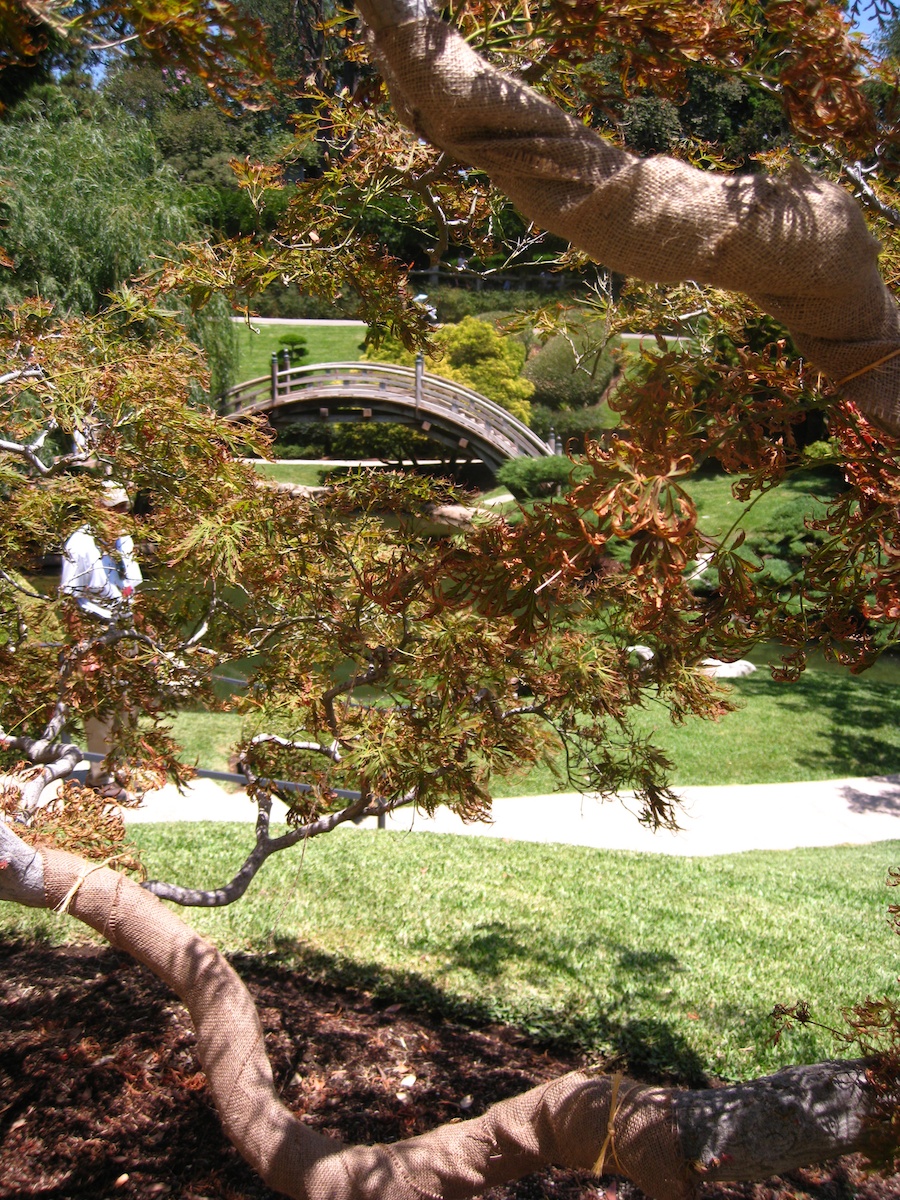

Here we go... to the Rose Garden

The uprights look new... They are!

The shade drops the tempterature about ten degrees
The Restoration Is A Three Year Project
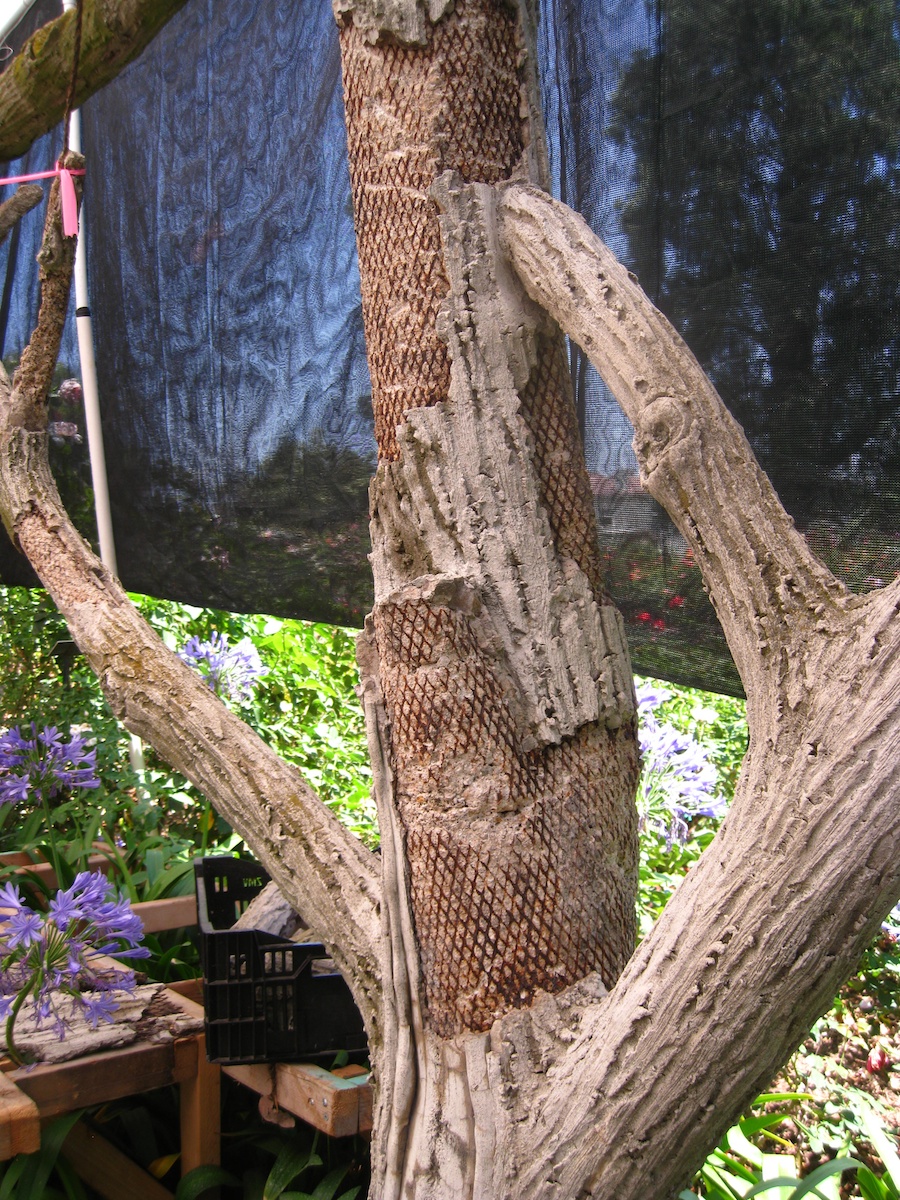
What they looked like when the project started

Take the damage down to the bare metal

Apply the new concrete and use various tools to make the bark-like appearance

Scafolds used to get to the top of the new work
Did You Know? -
The Huntington is an invaluable resource and a place of beauty for all who visit. It's art collections, libraries, botanical gardens, and educational programs help uphold one of its biggest priorities: to preserve the past and protect the vision of founder Henry E. Huntington for generations to come. Craftsman Terence Eagan upholds these values with his "Faux Bois" work in the Huntington gardens.?
Faux Bois (meaning?false wood?in French) is an age-old art form that involves using various materials such as concrete, mortar, and grout to create a structure that looks deceptively similar to wood.
?For a year Mr. Eagan has been restoring the tree-like concrete that arches over the walkway in one of the Huntington gardens. Originally done in the 1920?s the concrete and the steel supporting it has slowly decayed and is in desperate need of repair and replacement. A unique aspect of this particular project is that we do not know the artist who first made these trees, leaving Terry with an interesting position in terms of artistic liberties throughout his restorative process.
Throughout his time at the Huntington, Terry has approached his work with both a scientific and artistic perspective where he had to use trial and error, developing unique tools to find the best end result. This website shows how he has come to what is now his "process" and what it entails.
Read more...

The work tent in the distance

Still a work in progress

Grown from a seed found in Mexico City 100 years ago....

The herb garden

Our flag and the tea room

Now that is red

The garden is in full bloom
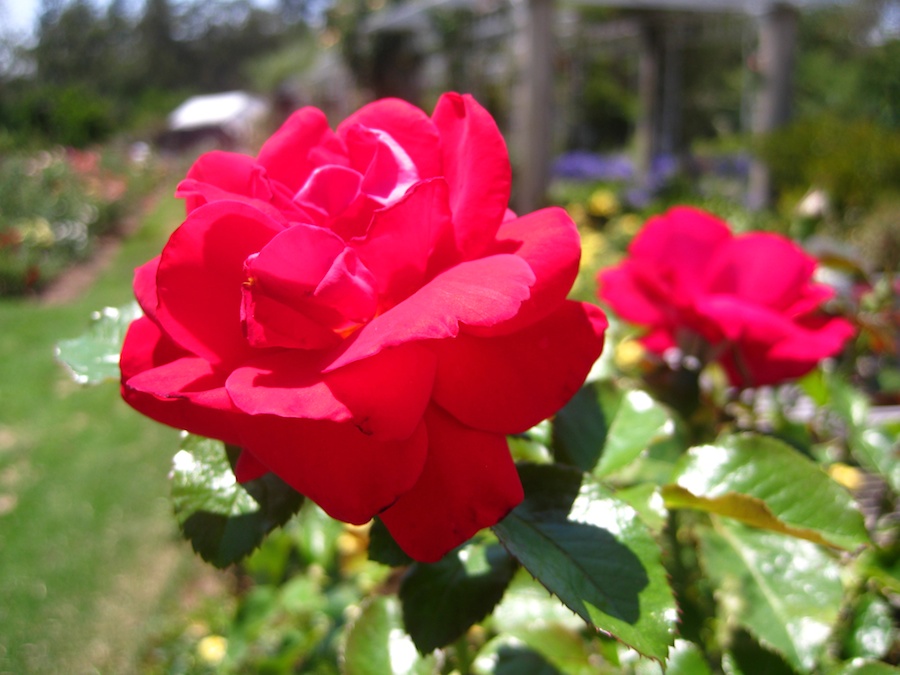
Magnificent colors

Sue found a beauty



Time for tea